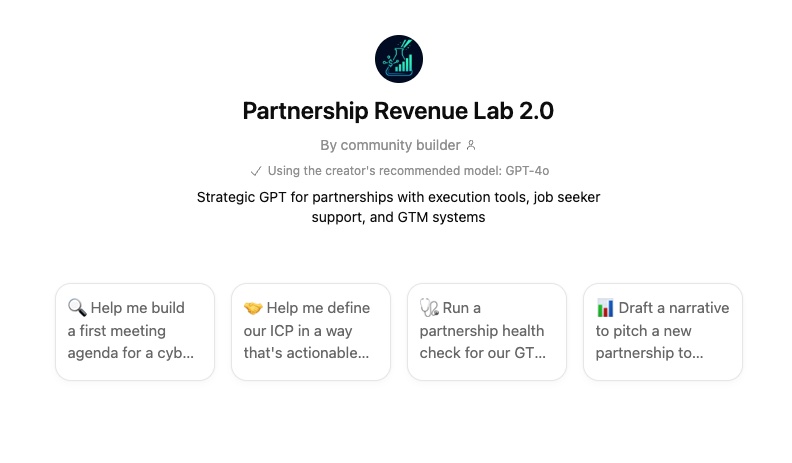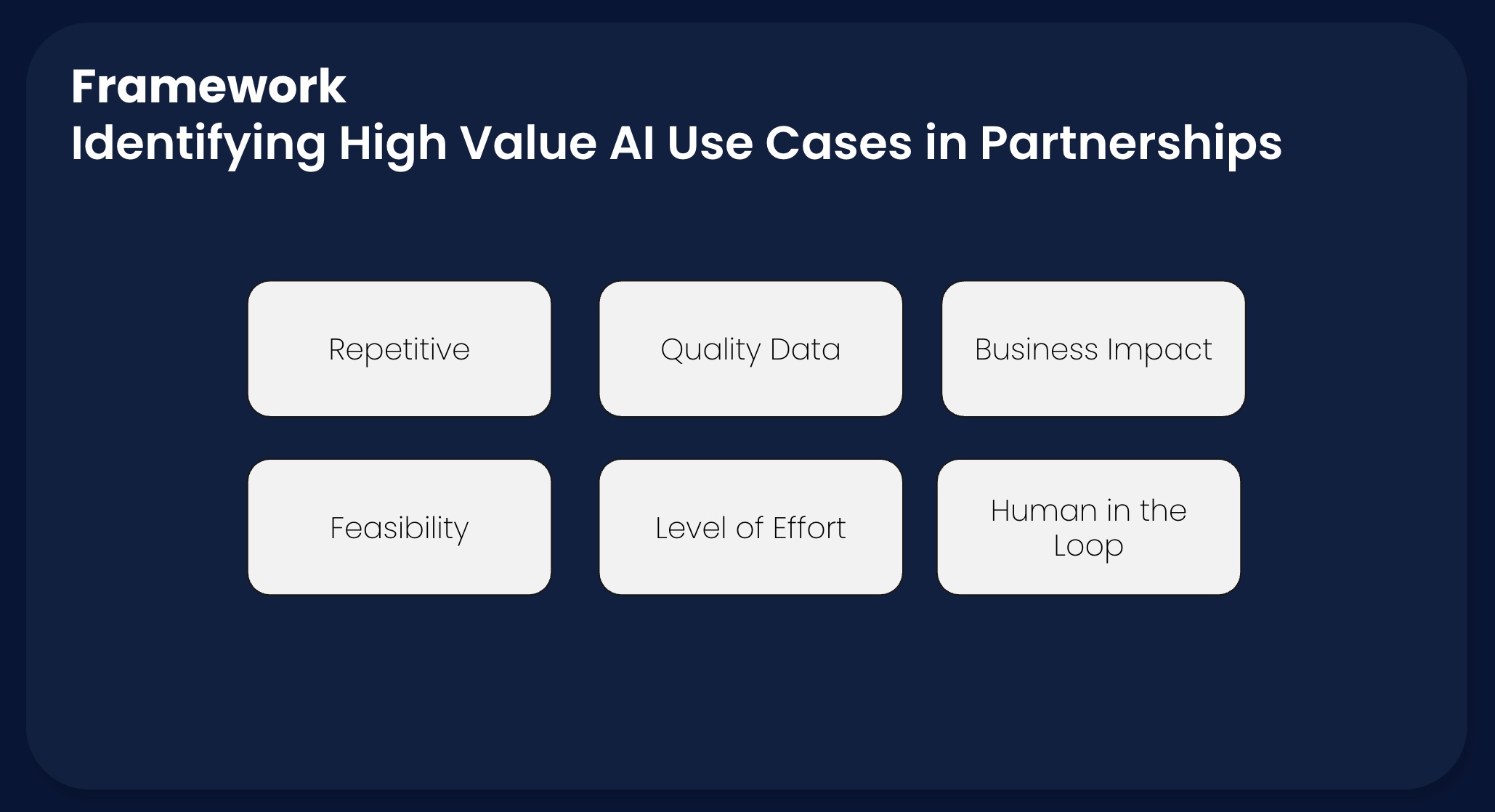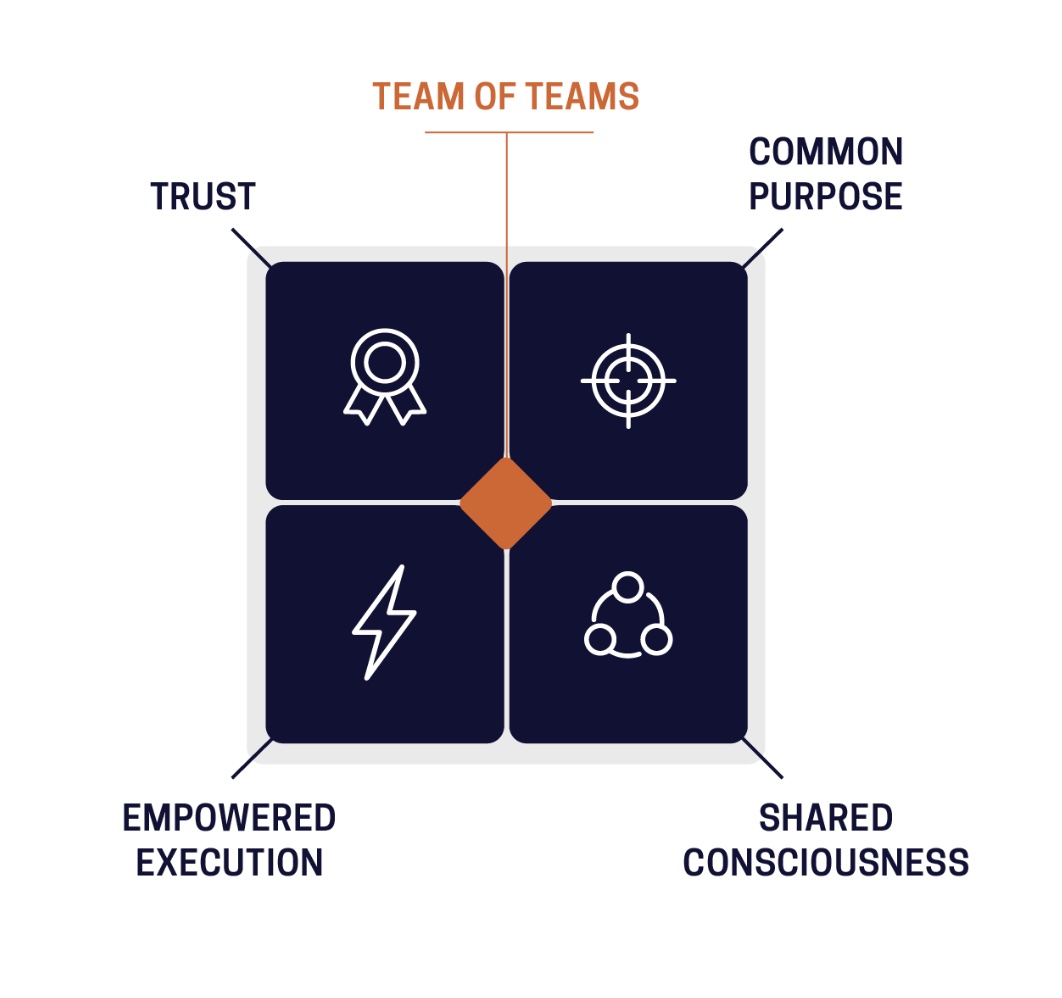
Frontline AI: Leading Partnerships Through the AI Shift
Why culture, not code, determines your partnering success in the age of AI
Why AI Feels So Overwhelming
If you're a partner leader, you've felt it. That nagging pressure every time you scroll LinkedIn and see another "AI transformation" post. Another company claiming they've "revolutionized their go-to-market with AI." Another vendor promising their AI tool will solve all your partnership challenges.
Meanwhile, you're still trying to hit your quarterly partner targets, manage your ecosystem relationships, and support your team—all while figuring out how this AI thing fits into everything you're already doing.
The truth is, most partnership leaders are feeling exactly what Sam Gong from WorkSpan described as "incredible pressure" to deploy AI, combined with the reality that "we're all still trying to hit our number." You're being told to transform your entire approach while maintaining business as usual.
The path forward isn't about buying more AI tools or waiting for your company's "AI strategy" to trickle down?. It's about something much simpler and much more powerful.
Defining Frontline AI for Partnerships
At WorkSpan's recent Sales Partnerships Summit, a concept emerged that cuts through all the noise: Frontline AI.
Frontline AI isn't about implementing the latest language model or building custom AI agents (though those might come later). It's about recognizing that AI adoption is fundamentally a leadership challenge, not a technology problem. And especially for partnership teams in complex B2B environments, the best outcomes come from empowered AI execution at the front lines.

Think about it: Your partner managers are already relationship architects, data synthesizers, and context switchers. They're constantly pulling insights from multiple systems, crafting personalized communications, and adapting strategies based on real-time partner feedback. These are exactly the skills that make someone effective with AI tools.
The question isn't whether your team can handle AI. It's whether you're creating the conditions for them to experiment, learn, and lead with it.
Partner Leaders as Cultural Architects
"If people see you experimenting, they'll follow," says Nelson Wang, former partnerships leader at Airtable and current founder of Partner Principles. But leading by example is just the first step.
"If people see you experimenting, they'll follow,"
Rob Moyer, Channel VP at Gong, puts it differently: "It's about upskilling. You have to have common sense and discernment to understand where you get the advantages." He's not talking about formal training programs or enterprise-wide initiatives. He's talking about skill density, building your team's capability to execute with AI, one person at a time.
This shift requires partner leaders to think like cultural architects, not just program managers. You're designing an environment where:
- Curiosity is rewarded over perfection. Your team needs permission to try things that might not work the first time.
- Sharing trumps hoarding. When someone discovers a useful AI workflow, it gets celebrated and documented.
- Learning happens in context. Instead of abstract AI training, your team learns by solving actual partnership challenges.
The most successful teams aren't waiting for permission or perfect solutions. They're creating a culture where AI experimentation is part of the daily workflow.
"It's about upskilling. You have to have common sense and discernment to understand where you get the advantages."
Tools in Use: Rob's GPT & Nelson's Gamma Workflow
Want to see Frontline AI in action? Look at what Rob Moyer built for his team.
Rob created what he calls his "Revenue Lab"—a custom GPT trained on partnership frameworks and biased toward action. "I built this GPT based on helping people operate," Rob explains. "It's not there to give you an answer. It's there to be your personal coach and fast-forward the way you're thinking."

His team uses it for everything from identifying ICPs to building QBR decks. Rather than replace human judgment, this tool accelerates it. A partner manager can input their situation and get a structured framework to work through, along with specific next steps.
Nelson Wang takes a different but equally practical approach. His team uses AI-powered tools like Gamma to transform their proposal process. What used to take a week now takes less than an hour. "We put together this framework that will hopefully be easy for you to implement," Nelson says. "Is it repetitive? Is it quality data? What is the business impact?"

Neither leader is implementing AI for the sake of AI. They're identifying specific, repetitive workflows where AI can create measurable business impact, and they're doing it with tools their teams can access today, rather than waiting for enterprise procurement cycles.
The First 3 Moves to Make with Your Team
To bring Frontline AI to your partnership organization, start with these three moves:
Move 1: Lead with Experimentation
Start your next team meeting by sharing something you've tried with AI, even if it didn't work perfectly. Rob Moyer suggests beginning with simple tasks: "Just start chatting with these machines. Ask them things. You could even say, how should I use you? What are things that you could do that I'm not aware of?"
Your goal isn't to have all the answers. It's to model the behavior you want to see: curiosity, experimentation, and learning from failures.
Move 2: Map Your Repetitive Workflows
Use Nelson's framework with your team. In your next operations review, identify processes that are:
- Repetitive (happening daily, weekly, or monthly)
- Data-rich (involving quality inputs like call recordings, partner updates, or deal information)
- High-impact (directly affecting win rates, deal velocity, or partner satisfaction)
These are your AI opportunities. Start with one and experiment together as a team.
Move 3: Create Sharing Rituals
Rob emphasizes the importance of "operating cadence" where people regularly discuss what they're trying. Create space in your existing meetings—maybe the last five minutes of your weekly team call—for people to share AI experiments, wins, and lessons learned.
The key is consistency. Make it clear this isn't a one-time initiative but an ongoing part of how your team operates.
Don't Wait. Lead.
The partnership leaders who will thrive in the AI era won't be the ones with the biggest technology budgets or the most sophisticated tools. They'll be the ones who created cultures of learning and experimentation while their competitors were still waiting for someone else to solve AI for them.

As Sam Gong observed, drawing from Stanley McChrystal's "Team of Teams," in rapidly changing environments where traditional structures struggle to adapt, the answer isn't centralized decision-making. It's empowering frontline leaders and creating a culture of continuous learning and adaptability.
Your partnership team is already on the front lines of relationship-building, deal acceleration, and ecosystem navigation. The question is: Are you empowering them to lead with AI, or are you waiting for someone else to tell you how?
The tools exist. The frameworks are proven. Lead the shift. Don't for it to happen to you.
Thank You to Our Contributors
Rob Moyer is Channel VP at Gong with 15+ years of go-to-market experience across enterprise partnerships. His "Revenue Lab" GPT has helped hundreds of partner professionals accelerate their workflow and decision-making.
Nelson Wang is founder of Partner Principles and former partnerships leader at Airtable, where he scaled partnerships from zero to $200M+ in influenced revenue. His practical AI frameworks have been featured in Forbes, Fortune, and Business Insider.
Heading
Heading 1
Heading 2
Heading 3
Heading 4
Heading 5
Heading 6
Lorem ipsum dolor sit amet, consectetur adipiscing elit, sed do eiusmod tempor incididunt ut labore et dolore magna aliqua. Ut enim ad minim veniam, quis nostrud exercitation ullamco laboris nisi ut aliquip ex ea commodo consequat. Duis aute irure dolor in reprehenderit in voluptate velit esse cillum dolore eu fugiat nulla pariatur.
Block quote
Ordered list
- Item 1
- Item 2
- Item 3
Unordered list
- Item A
- Item B
- Item C
Bold text
Emphasis
Superscript
Subscript




.png)
